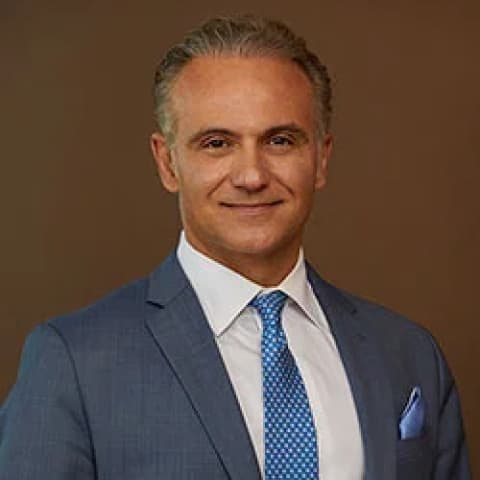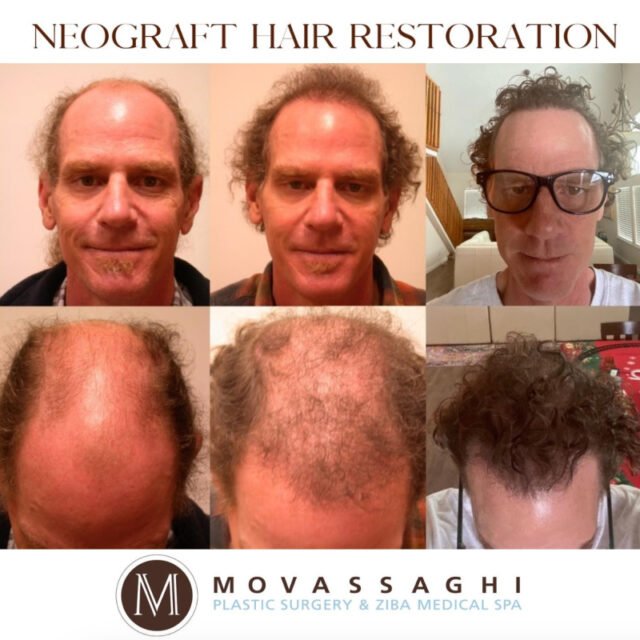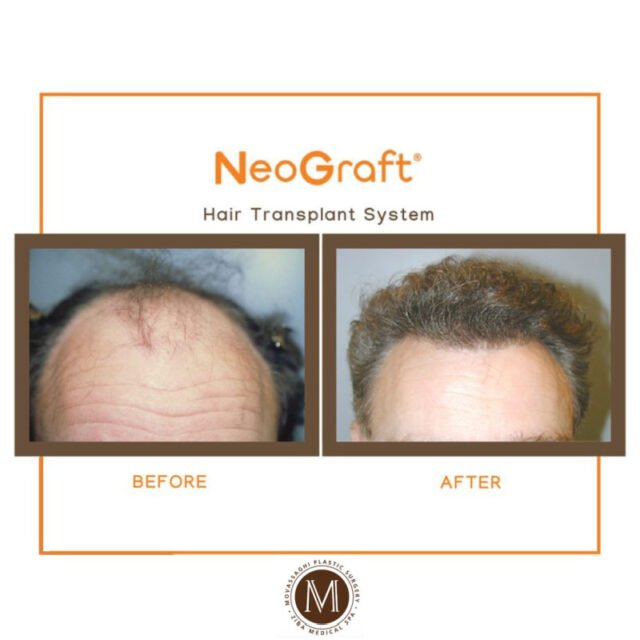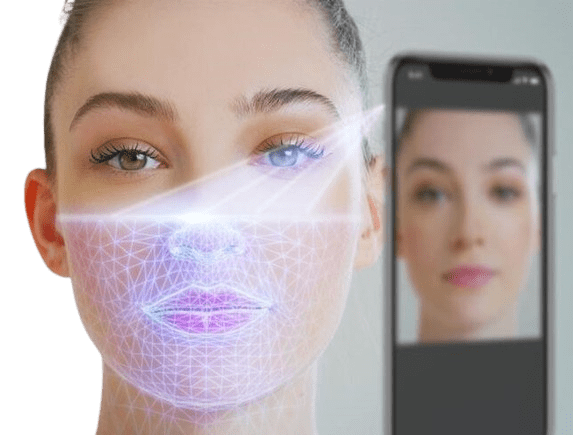Our comprehensive approach to hair restoration uses advanced treatments to address multiple causes of hair loss for naturally fuller, stronger hair.

Your hair plays an important role in defining your appearance. Noticeable thinning, a receding hairline, or pattern baldness, while extremely common, can negatively impact your self-confidence. The good news is that you do not have to accept hair loss, and you do not have to compromise a natural look.
At Movassaghi Plastic Surgery, we take a holistic, multifaceted approach to the complex causes of hair loss. Our Eugene hair restoration program uses the latest techniques, starting with NeoGraft® Hair Transplant System—a transformative, minimally-invasive hair loss treatment that can help both men and women in Eugene regain a fuller, more attractive head of hair.
In addition to NeoGraft, we utilize RF microneedling, proven exosome therapy, and Nutrafol hair growth supplements to support optimal hair growth.
“I did the Hair Transplant Surgery from the back of my head to the front. The reults were incredible, I thought I was going to just have to learn to live with going Bald. I Definitely recommend this to any other men who are starting to see their hairline fading.”
What is NeoGraft?
We are proud to offer NeoGraft for hair loss at Movassaghi Plastic Surgery, the first FDA-cleared automated follicular unit extraction (FUE) procedure for hair restoration. In a minimally-invasive outpatient procedure, NeoGraft transplants individual healthy hair follicles from the back of your head to repopulate thinning areas without an embarrassing scar, helping you restore a youthful hairline and enjoy normal, healthy hair growth within just a few months. Plus, results can last a lifetime.
Dr. Kiya Movassaghi is a highly respected board-certified plastic surgeon with more than 20 years of experience in the field. His extensive surgical expertise, combined with an exceptional aesthetic eye, ensures that patients receive stunning, natural-looking results.
How does NeoGraft work?
Aging or genetics can cause hair loss on the front, sides, or top of your head, but hair follicles located on the back of your head are genetically programmed to produce healthy hair growth your entire life. The NeoGraft procedure extracts individual follicular units from this area and relocates them to areas where you are experiencing hair loss. This automated process helps to remove follicles more gently and precisely, which greatly increases follicle survival rate following transplantation.
The procedure takes only a few hours to perform and restores normal, natural hair growth within 3 to 4 months after treatment. Moreover, patients are glad they had this treatment—NeoGraft has a 97% Worth-It rating on RealSelf.com.
What are the benefits of Neograft?
- Minimally-invasive outpatient procedure with only local anesthesia
- No linear scar—minor pinpoint scarring produced during extraction heals inconspicuously once hair regrows in the area
- NeoGraft treatment time is hours less than older, manual methods of extraction
- Very little downtime—many patients return to a desk job the next day, and exercise is permitted within a couple of weeks
- Excellent success rate—NeoGraft’s proprietary technology extracts hair follicles carefully and precisely, increasing their survival rate significantly for more satisfying, predictable results
- You can style, cut or color your hair however you want after NeoGraft—no minimum length required!
- Results can last a lifetime

How is NeoGraft performed?
Our NeoGraft trained technicians perform the hair transplant as an outpatient procedure. First, they will mark the areas where they will place each follicular unit to ensure a natural hair pattern once hair growth is restored. To keep you comfortable during treatment, your scalp will be numbed with local anesthesia.
During the procedure, your hair transplant technician will extract the needed follicles from the back of your head using the handheld NeoGraft device, removing each follicle quickly and gently. These follicles are then placed in a temporary chamber to keep them in the optimal environment while they await transplantation. When the extraction is complete, your tech will implant each unit precisely into the scalp to restore even, natural thickness to your hairline or balding areas.
What is NeoGraft recovery like?
Following treatment, you will notice that the newly transplanted hair begins to shed away after 2 to 3 weeks, which is a completely normal process. Within 3 to 4 months, your hair will have fully resumed its normal growth cycle, and from this point on, you will enjoy fuller, healthier hair growth in the treated areas.
Discover procedures to enhance each area of your body with our interactive guide.
Is NeoGraft a good option for me?
For the right patient, NeoGraft can be a safe, effective option to treat moderate to advanced hair loss and restore healthy hair growth. You might consider NeoGraft if you:
- Are a man or woman suffering from pattern baldness or other progressive forms of hair loss
- Feel self-conscious about the effect hair loss has had on your appearance
- Are in good general health
- Want the freedom to wear your hair in any style you choose
- Have realistic expectations about results
Our Holistic Approach to Hair Restoration
We offer additional treatments to target hair loss and promote new hair growth at our Eugene plastic surgery center. Each of our treatments can be used alone or synergistically with NeoGraft to achieve optimal hair restoration results. During your consultation, we will review your options and help you decide what treatment plan can best achieve the results you desire.
RF microneedling
RF microneedling is highly effective in stimulating hair growth and improving scalp health. Sylfirm X RF Microneedling—the world’s first FDA-cleared pulsed wave and continuous wave radio frequency microneedling system—amplifies the proven benefits of microneedling with powerful radiofrequency energy to fortify and encourage your natural hair growth. Here’s how:
- Stimulates collagen production for stronger hair: The microneedling device contains 300 micron gold microneedles, which we use to precisely stamp into the skin to create tiny punctures in the scalp. Your body naturally boosts collagen production to heal the controlled damage—this new collagen growth helps strengthen the structural integrity of hair follicles to promote healthier and thicker hair growth and prevents hair breakage and loss for fuller and more resilient hair.
- Enhances blood circulation: The RF microneedling process also improves blood flow to the scalp, which delivers oxygen and essential nutrients to each hair follicle. Better circulation can nourish weakened follicles and revitalize dormant follicles to encourage the growth of new, healthy hair strands.
- Reduces inflammation: RF energy has unique anti-inflammatory properties that can soothe the scalp and help reduce conditions like dandruff and irritation that may contribute to hair loss. A healthier scalp environment is crucial for optimal hair growth.
Preparing for a hair restoration treatment with RF microneedling
Before undergoing RF microneedling for hair restoration, here are some recommended pre-treatment steps to enhance its effectiveness and minimize potential side effects:
- Consult with a hair restoration specialist: RF microneedling for hair loss should only be performed by a knowledgeable provider who assesses your hair and scalp condition to determine if this type of treatment is suitable for your specific type of hair loss.
- Avoid UV exposure: Protect your scalp from UV rays for at least two weeks before your procedure to reduce the risk of skin irritation.
- Avoid exfoliating treatments: Stop using products with active ingredients like retinoids or harsh exfoliants on the scalp for 1-2 weeks to prevent oversensitivity during and after your RF microneedling treatment.
- Cleanse the scalp: Please arrive at your appointment with a clean, dry scalp and clean hair, free of any products or lotions to ensure optimal penetration of the microneedling device and to prevent infection.
Caring for your scalp after hair restoration with RF microneedling
After your RF microneedling treatment, you’ll need to follow our post-treatment care guidelines to experience the best results and minimize side effects:
- Protect your scalp from direct sunlight for at least a week post-treatment. Wear a hat or use a high-SPF sunscreen if you need to go outside.
- Do not scratch, pick, or rub the treated areas to prevent infection and ensure proper healing.
- Avoid strenuous exercise and activities that cause excessive sweating for at least 24-48 hours after the procedure to reduce the risk of irritation or swelling.
- Attend all scheduled follow-up sessions so we can monitor your progress.
Results
Most patients notice a gradual increase in new hair growth and improved scalp health several weeks following their treatment. It’s important to remember the hair growth cycle takes time, but most patients are happy with their final results. Depending on the extent of your hair loss, we may recommend a short series of 1-3 treatments to achieve optimal hair growth, or maintenance treatments as needed to sustain results.
Is RF microneedling a good option for my hair loss?
We will determine if RF microneedling is the best treatment option for you. Individuals experiencing androgenetic alopecia (pattern hair loss), alopecia areata, or other forms of hair thinning are typically strong candidates for this treatment.
We may also recommend adding RF microneedling treatments as a complementary therapy to NeoGraft hair transplants to improve results further.
Exosome therapy
Exosomes are tiny molecules that contain regenerative properties that can significantly enhance hair restoration. We use Benev Exosome Regenerative Complex, which is a highly purified serum that delivers lyophilized exosomes alongside peptides, coenzymes, minerals, amino acids, vitamins, and more to rejuvenate and revitalize the skin and scalp.
When administered post-microneedling, the microchannels created by the needles allow for deeper and more effective penetration of these bioactive molecules into the scalp. This targeted delivery stimulates new follicle cells, new blood cells, and reduces inflammation, all of which are crucial for revitalizing dormant hair follicles and encouraging robust hair growth.
Exosomes also help accelerate the healing process after an RF microneedling treatment for the strongest results with a shorter recovery.
Nutrafol hair growth supplements
Our Eugene medical spa also offers Nutrafol, an all-natural, clinically-proven hair growth supplement. Nutrafol is formulated to target the multiple causes of hair thinning and loss for both men and women. It is physician-approved and considered a safe, effective investment in your hair health and appearance. Nutrafol can be taken on its own, or in conjunction with one of our other hair restoration treatments for enhanced results. Learn more about Nutrafol here »
Ready to learn more about your hair restoration options in Eugene?“I wanted to take a moment to express my utmost satisfaction with Dr. Movassaghi and the entire clinic team. My experience with Dr. Movassaghi has been nothing short of amazing. His talent and expertise as a doctor and surgeon are truly unparalleled, and I am incredibly grateful for the outstanding results of my procedure.”
Board-certified Eugene plastic surgeon Dr. Kiya Movassaghi and our experienced staff can help you decide which hair restoration method is ideal to treat your hair loss, and which complementary treatment(s) can help enhance your hair growth long term. Call (541) 686-8700 or contact us online to schedule your personal consultation today.
References »
Zito PM, Raggio BS. Hair Transplantation. [Updated 2024 Feb 12]. In: StatPearls [Internet]. Treasure Island (FL): StatPearls Publishing; 2024 Jan-.
Sharma R, Ranjan A. Follicular Unit Extraction (FUE) Hair Transplant: Curves Ahead. Journal of Oral and Maxillofacial Surgery. 2019 Dec;18(4):509-517. doi: 10.1007/s12663-019-01245-6.
Garg A, Garg S. Overview of Follicular Extraction. Indian Journal of Plastic Surgery. 2021 Dec 20;54(4):456-462. doi: 10.1055/s-0041-1739244.



